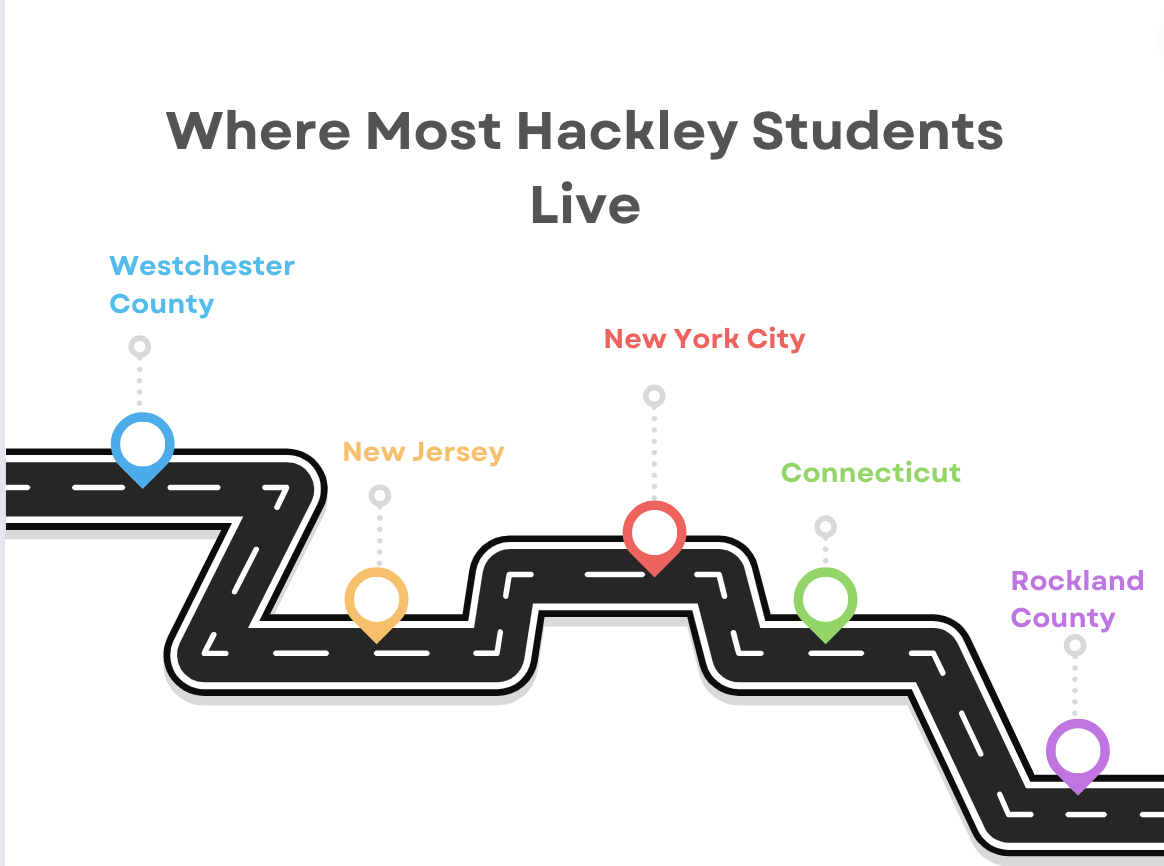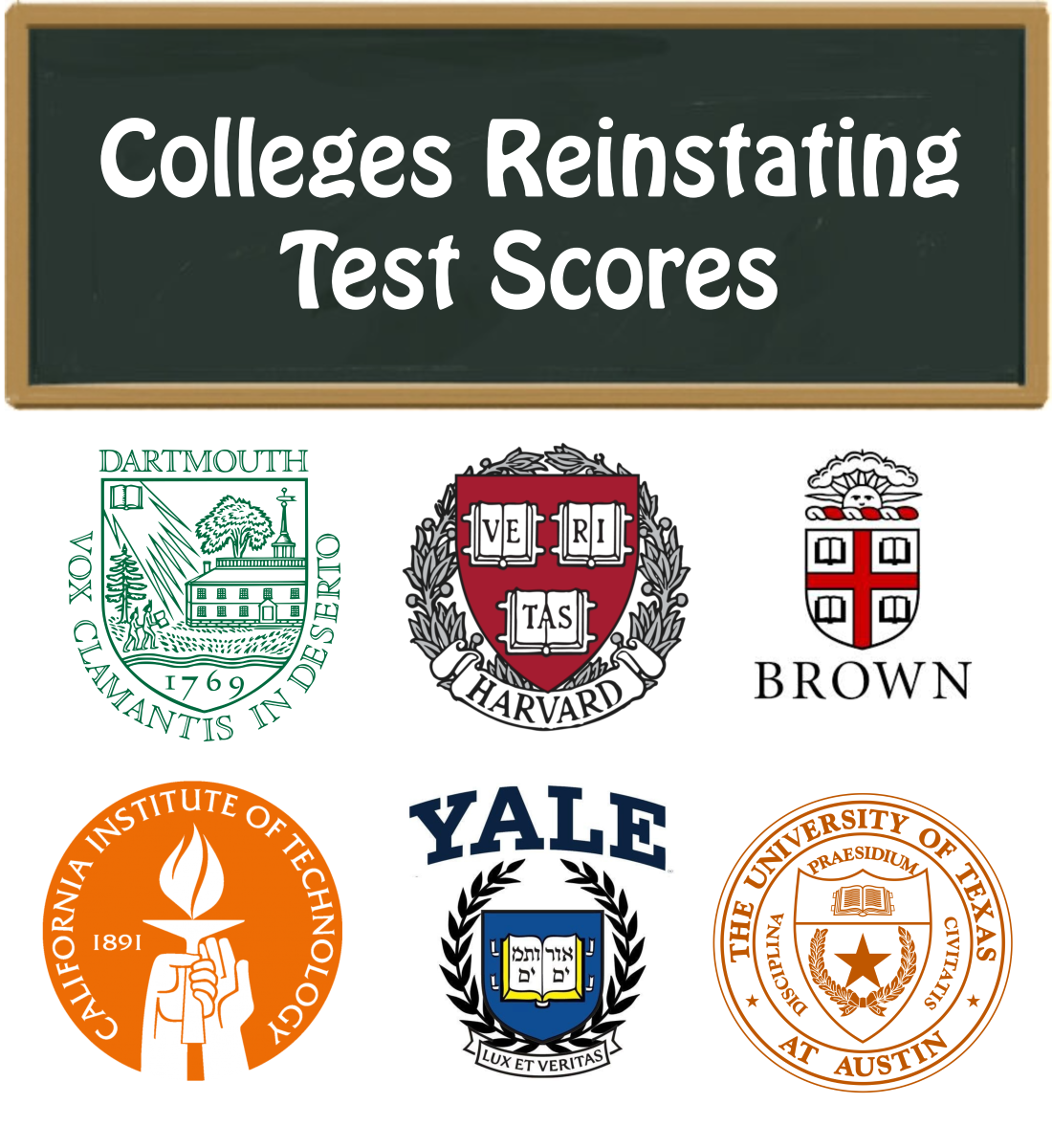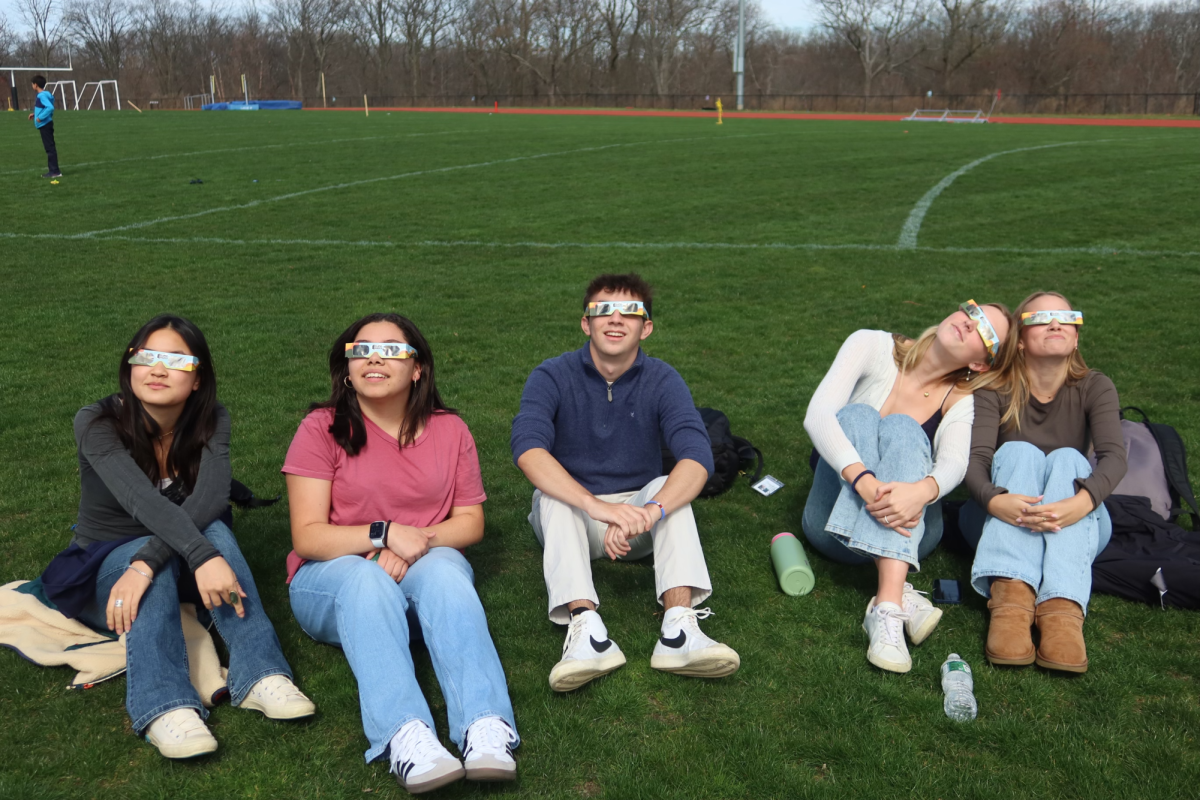A student wakes up at 6:00 a.m. and has to be out the door by 7:00 a.m. After traveling almost an hour to school and enduring a long day of assessments, classes, and sports, they then have to commute all the way back home, this time with rush hour traffic, and attempt to complete all their work at a reasonable hour in order to repeat the same cycle the next day.
As an independent school, Hackley attracts students from all over the tri-state area. From Westchester County to New Jersey to Connecticut to even New York City, some students travel far and wide to attend school. Although there is the option of five-day boarding for Upper School students, most students prefer to commute from home every day. However, students with long commutes are prone to getting less sleep due to the need to wake up earlier leading to an unhealthy work-life balance.
A survey of students’ commutes and how it affects their lifestyle, indicated that having a commute longer than 45 minutes can get in the way of getting proper amounts of sleep as well as hanging out with friends outside of school.
Junior Jael Nuamah lives near Poughkeepsie, roughly one hour away. Having to drive an hour to school each morning, Jael wakes up at 6:00 a.m. and is out the door by 6:45 a.m. Even though this is very early in the morning, she can go to bed at a reasonable hour, around 10 p.m., because she uses her free periods during the day to get a head start on homework.
Although Jael has found a way to prioritize her sleep, she claimed that living so far from school does get in the way at times. “After-school events are difficult to attend because my only ride would be my dad, and it creates an inconvenience for him to drive me and wait to pick me up,” she said.
To find a way to immerse herself in school events still,, Jael finds a friend whose house she could stay over. However, even with this solution, she occasionally wishes her commute to school was shorter as it would make attending school activities easier.
On the other hand, Tommy Troso ‘24, has a much shorter commute to school, just 25 minutes. Living in Chappaqua, he can wake up an hour later than Jael, at 7:00 a.m.
“I’m always open to a shorter commute, on the contrary, I am satisfied with my current commute. It is practical and does not get in the way of my sleep schedule.”
Due to his home being close to school, attending after-school activities is not an issue for him.
Yet a commute many upper schoolers have to make is the drive from Manhattan to Tarrytown each morning. Cecily Lewis is currently a sophomore and lives on the Upper East Side. Like most city kids, he has to be ready early in the morning to catch one of the two buses that transport students from NYC to Tarrytown which leaves at around 7:10 a.m.
“Something I noticed about my route is that my bus driver is inconsistent, we get a different driver often, and sometimes they don’t know how to get to Hackley efficiently,” he said.
With this inconsistency, his drive to school can reach up to one hour in the mornings and risks those on the bus to be late to first period frequently. Cecily believes that having such a lengthy commute ends up getting in the way of obtaining a healthy sleep schedule as well as participating in extracurricular events hosted on the Hilltop.
“I feel like it’s really difficult for city kids to participate in after-school activities because there is one 6:10 p.m. bus that takes really long to get to the East Side and doesn’t get there until 8 p.m.”
Most students who live in New York City have to face the challenge of trying to make either the 4:45 p.m. or 6:10 p.m. bus because, for many, that is their only mode of transportation to get home.













